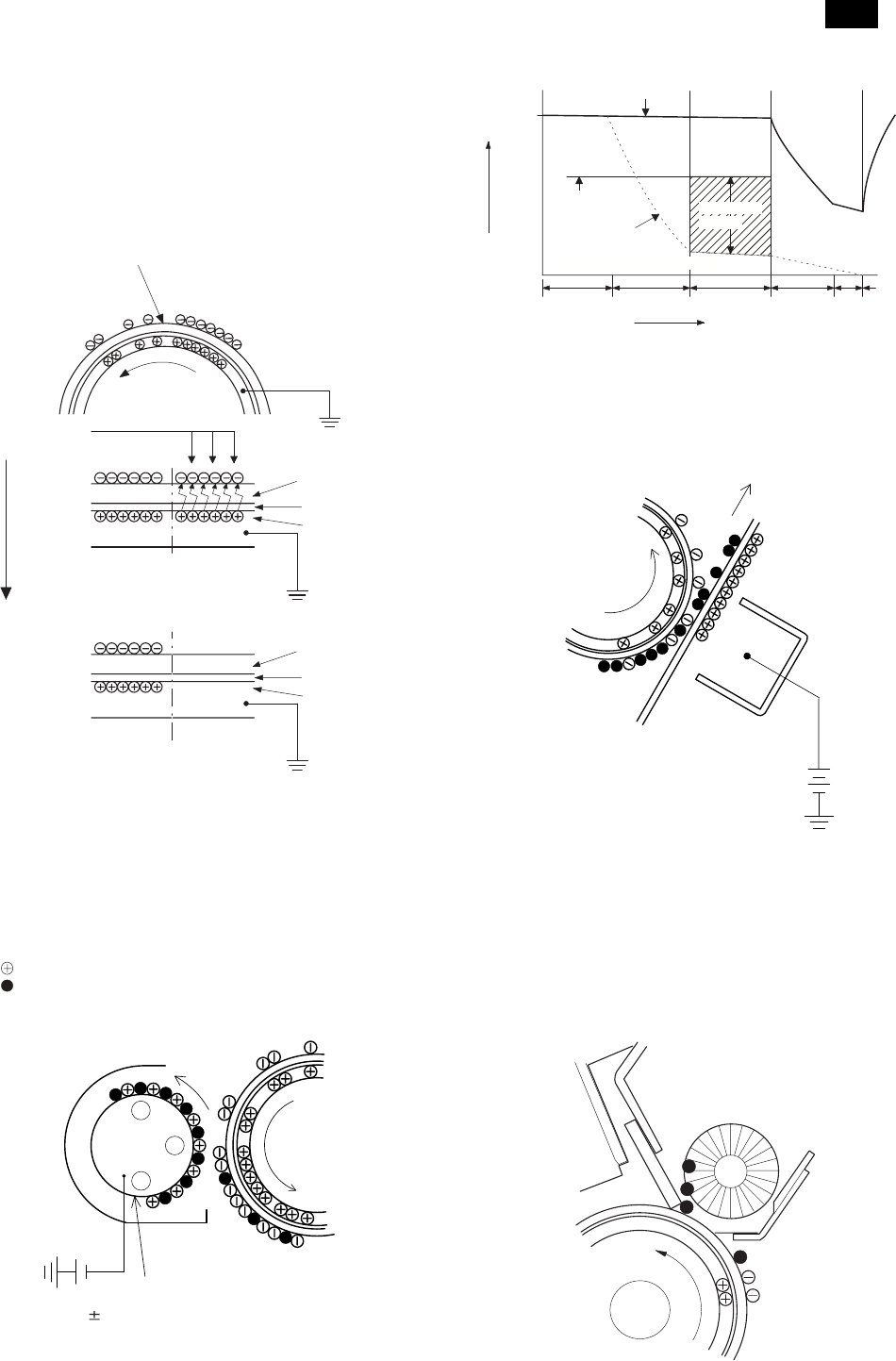
(2) Exposure
A Laser beam is generated from the semiconductor laser and control-
led by the print pattern signal. The laser writes onto the OPC drum
surface through the polygon mirrors and lens. The resistance of the
OPC layer decreases for an area exposed by the laser beam (cor-
responding to the print pattern signal). The beam neutralizes the
negative charge. An electrostatic latent image is formed on the drum
surface.
(3) Developing (DC bias)
A bias potential is applied to the MG roller in the two component
magnetic brush developing method, and the toner is charged nega-
tive through friction with the carrier. Non-image area of the drum
surface charged with negative potential repel the toner, whereas the
laser exposed portions where no negative charges exist, attract the
toner. As a result, a visible image appears on the drum surface.
Toner is attracted over the shadowed area because of the developing
bias.
(4) Transfer
The visible image on the drum surface is transferred onto the print
paper by applying a positive charge from the transfer corona to the
backside of the print paper.
(5) Separation
Since the print paper is charged positively by the transfer corona, it is
discharged by the separation corona. The separation corona is con-
nected to ground.
(6) Cleaning
Toner remaining on the drum is removed and collected by the clean-
ing blade. It is transported to the waste toner collecting section in the
cleaning unit by the waste toner transport roller.
OPC layer
Pigment
layer
Aluminum
OPC layer
Pigment
layer
Aluminum
layer
Drum surface charge
sfter the exposure
Non-image area Image area
Semiconductor laser
Exposure
(semiconductor laser)
layer
S
N
N
MG roller
DC
-400v
-8V
: Carrier (Magnetized particle)
: Toner (Charge negative by friction)
(N) (S) : Pemanent magnet
(provided in three locations)
-600
0
Toner attract
potential
Drum surface potential
Non-image area
Developing bias
Image area
Residual potential (-50 to -100V)
Charge Exposure Developing Transfer
Discharge
Charge
Time
-400
AR-160/161 FM/E [6] OPERATIONAL DESCRIPTIONS 11/27/1998
AR-161
6 – 4


















